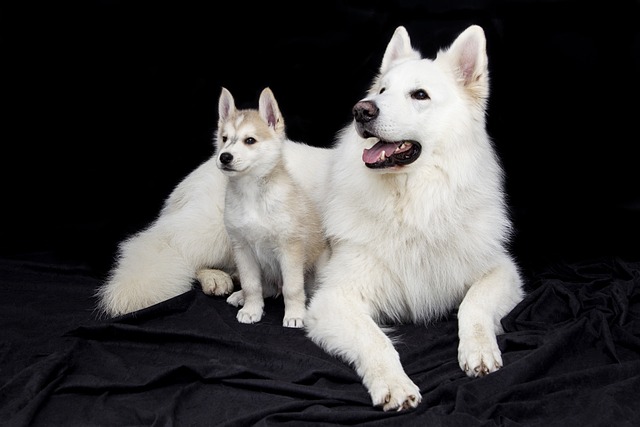
How can I tell if my dog's heatstroke is serious
Let’s be real: It’s a sticky August morning in Los Angeles, and you took your 2-year-old Golden Retriever, Max, for a walk a little later than usual
Imagine you’re in your Seattle apartment, handing your 2-year-old Shih Tzu their favorite hard dental chew—they usually grab it and run to their bed, but today they sniff it, then back away, whimpering. Later, you lean in to give them a goodnight hug, and a sharp, rotten smell hits your nose. You lift their lip gently, and your heart drops: Their gums are bright red, and there’s a yellow crust (tartar!) along their back teeth. If this panic feels familiar, you’re one of millions of new U.S. dog owners scrambling to figure out how to stop tooth decay in dogs—and the good news is, it’s all about small, consistent habits, even in a tiny apartment.
Here’s the simple science (no fancy dentist talk!): Tooth decay in dogs starts when plaque (sticky food gunk + bacteria) builds up on teeth. If you don’t brush it off within 24 hours, it hardens into tartar—that crusty stuff that eats away at tooth enamel and causes cavities. Once tartar sets in, you can’t scrape it off with a finger—you need vet help for the tough stuff, but you can stop it from getting worse (and prevent new decay) with daily care. My friend in Austin learned this: She ignored her Corgi’s bad breath for months, and by the time she saw a vet, he had two small cavities—but with consistent care, they stopped any more from forming.
Let’s break down the easy, actionable steps to stop decay. First, brush their teeth (gently!): Use a dog-specific toothbrush (smaller heads work for tiny mouths!) and toothpaste (never human toothpaste—it’s toxic!). Start slow: Rub the brush on one tooth, give a freeze-dried chicken treat, then stop. Build up to 30 seconds a day—positive reinforcement makes it a game, not a fight. Second, swap treats for dental-friendly options: Pick VOHC-seal chews (the U.S. standard for plaque-fighting) or frozen green beans—soft, sugary treats (like peanut butter cookies) stick to teeth and feed decay. Third, for apartment living, choose quiet dental toys: Rubber Kongs stuffed with a little plain yogurt (freeze it for longer play!) scrape plaque without annoying neighbors (no loud bones at 8 PM!). Finally, check their teeth weekly: Lift lips to spot red gums or new tartar—catch it early, and you can stop decay fast.

Don’t forget U.S. rules and community norms that tie into dental care. First, keep your dog’s rabies vaccines up to date—most vets won’t do a professional teeth cleaning (to remove tough tartar) unless shots are current, and many dog parks or daycares require proof of vaccines too. Always carry waste bags on walks: Leaving poop behind is illegal (I saw a mom get a $35 ticket in Denver last week!) and lets your dog eat bacteria-filled dirt that worsens gum issues (which make decay worse!). In apartments, stick to consistent brushing times—early morning or after dinner works best; brushing at 11 PM will wake up neighbors. Most importantly, never punish your dog for resisting teeth brushing: Yelling or holding their mouth shut goes against U.S. animal welfare standards (the ASPCA calls this “harmful to trust”). If they squirm, take a break, give a treat, and try again later.
If you already see decay (black spots on teeth, bleeding gums), call a vet ASAP—they’ll clean tartar and fix small cavities. With these steps, you’ll stop decay in its tracks and keep your pup’s teeth healthy—so next time they grab that dental chew, they’ll chew happily, no whimpers needed.

Let’s be real: It’s a sticky August morning in Los Angeles, and you took your 2-year-old Golden Retriever, Max, for a walk a little later than usual

You're enjoying a summer afternoon at the park when you notice your dog has stopped panting and appears disoriented - their gums are bright red

Let’s paint the picture: You’re in your Denver apartment, watching your 4-year-old Boston Terrier, Ruby, plop down mid-play session with her favorite toy

Many dog owners notice their pets nails seem shorter after regular walks,but how much does this daily activity actually help?The answer depends on where you walk—concrete sidewalks or asphalt streets gently file nails as a dog's paws hit the ground

Most dog owners notice their pup scooting across the carpet at some point, but few connect it to impacted anal glands. These small sacs near a dog’s rectum secrete a scent for marking territory

Most vets agree that regular dog teeth cleaning is key to avoiding painful dental issues later. For healthy adult dogs, a professional cleaning at the vet’s office every 12 to 18 months usually works well.